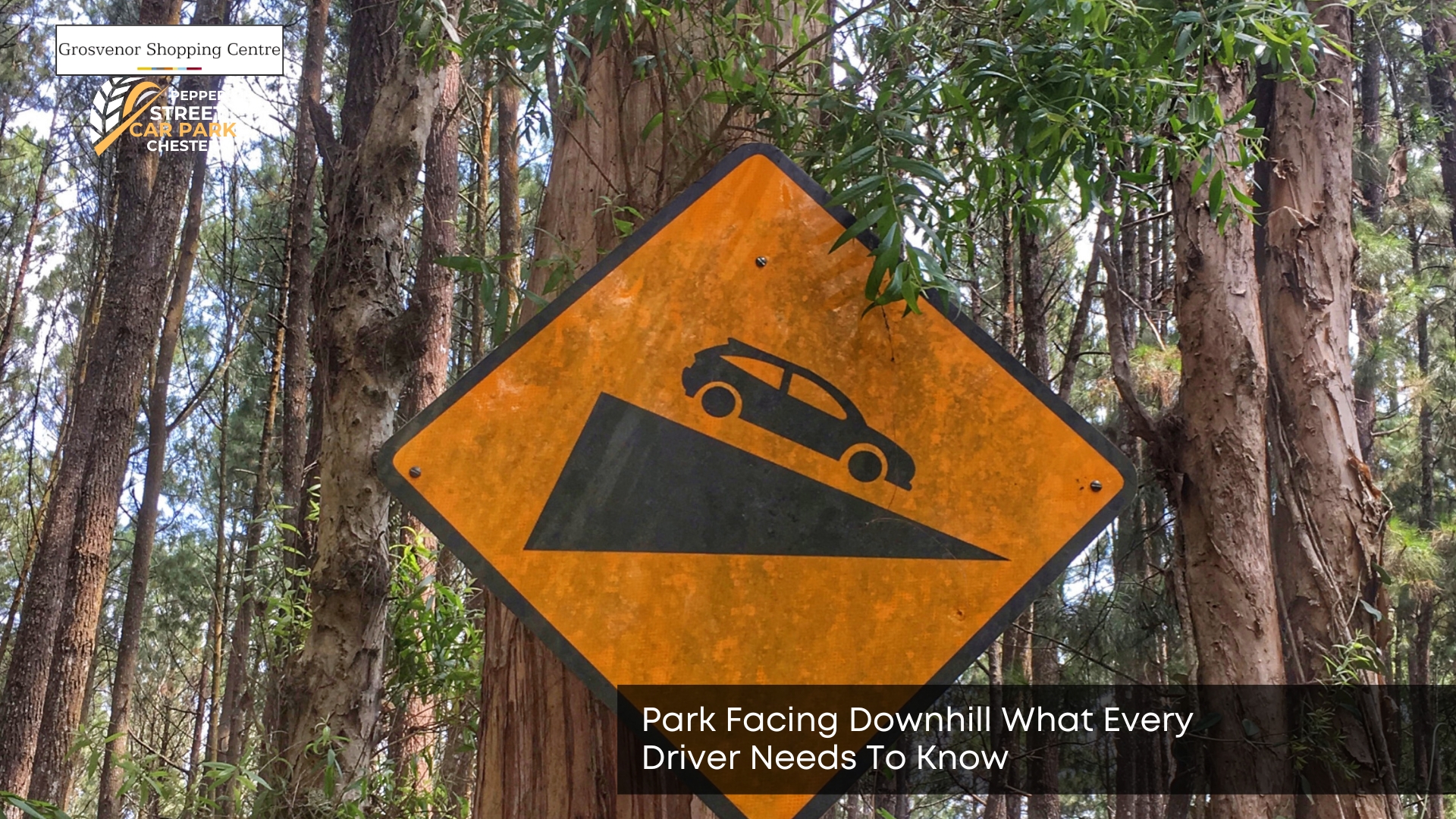Parking on a slope can be tricky if you don’t take the right steps. When you park facing downhill, your car requires extra care to stay in place and keep others safe. Knowing how to angle your wheels, use your handbrake, and follow local rules helps prevent damage and accidents. This guide covers everything drivers should know about downhill parking. You’ll also learn how it differs from other types of hill parking.
What Does It Mean to Park Facing Downhill?
To park facing downhill means stopping your car on a slope where the road goes down in the direction your car is pointing. The car is angled towards the bottom of the hill, and gravity pushes it forward. In this position, your parking method must stop the car from rolling. Knowing how this works helps you understand why specific steps are needed.
Should You Turn Your Wheels When Parking Downhill?
Yes, you should always turn your front wheels towards the kerb when parking downhill. This way, if the car moves, the tyres will hit the kerb and stop it rolling into the road. It’s a simple but important step for safety. Once your wheels are angled, your next focus should be the handbrake.
Is the Handbrake Enough to Hold the Car?
No, the handbrake alone may not be enough if the slope is steep or the brake is worn. It’s best to combine the handbrake with turning your wheels and using a low gear. Relying on just one method could lead to your car slipping. Using your gears plays a bigger role than many drivers realise.
Should You Use a Gear When Parking on a Hill?
Yes, use first gear if you drive a manual car and park facing uphill, but for downhill, put the car in reverse. This helps lock the wheels using engine resistance and acts as a backup if the handbrake fails. In an automatic, leave the car in ‘Park’. With gears set, it’s smart to double-check how stable your car feels before walking away.
How Do You Know If Your Car Is Secure on a Slope?
You know your car is secure if it doesn’t move when you release the brake slightly, and your wheels are firmly against the kerb. Look at the angle of your tyres and ensure that your handbrake is fully pulled. A quick tug on the car door can show if there’s any unwanted movement. If it still feels unsteady, there are extra tools you can use.
Can Wheel Chocks or Bricks Be Used as Extra Safety?
Yes, wheel chocks or heavy bricks can be placed behind the tyres for extra safety, especially on steep hills or when parking for an extended period. These blocks add a strong barrier to stop rolling. They’re cheap and easy to store in your boot. Even with extras, you should still be familiar with the local rules. If you’re travelling to more remote areas, these camping car park tips can help you stay secure on uneven ground or sloped sites.
What Are the Parking Rules for Hills in the UK?
In the UK, the Highway Code advises turning your wheels into the kerb when facing downhill, using your handbrake, and selecting the right gear. You may also need to keep your lights on at night, depending on the area. Failing to follow these rules could result in fines or hazardous situations. Understanding how rules vary helps when parking in different locations. In some areas, the Chester parking permit system may also include extra signage or restrictions you should understand before parking on hills.
Are There Different Rules for City and Rural Hill Parking?
Yes, city streets often have tighter spaces and more traffic, so precise wheel placement is crucial. Rural roads may lack kerbs, so using chocks or turning into the verge helps. Always look for signs that show specific parking limits or time zones. If unsure, local councils can help clarify what’s allowed. For better peace of mind, a trusted city centre car park in Chester offers a more stable alternative to street or verge parking on steep roads.
What Happens If You Don’t Park Properly on a Hill?
If you don’t park properly facing downhill, your car may roll into traffic or property, causing damage or injury. You could face a parking fine or be liable for any harm caused. Even if no accident happens, your car could be towed or clamped. That’s why these simple steps matter every time.
What Should You Do Before Leaving the Car?
Before leaving your car on a hill, double-check that the wheels, handbrake and gear are all set. Look behind and in front to ensure it won’t roll. If possible, turn your tyres slightly more to rest against the kerb. These quick checks only take seconds but offer peace of mind for you and others.
What Makes Downhill Parking Different from Uphill Parking?
Downhill parking focuses on keeping your car from rolling forward, while uphill parking means stopping it from rolling backwards. That’s why the wheel direction and gear choice are opposite in each case. Both need careful setup, but downhill parking tends to be more common on urban slopes. Once you master both, you’re ready for any terrain.


Leave a Reply